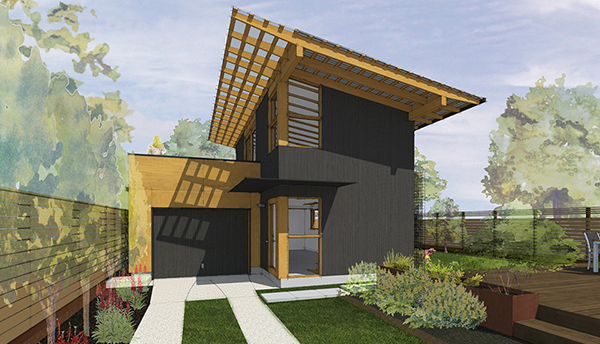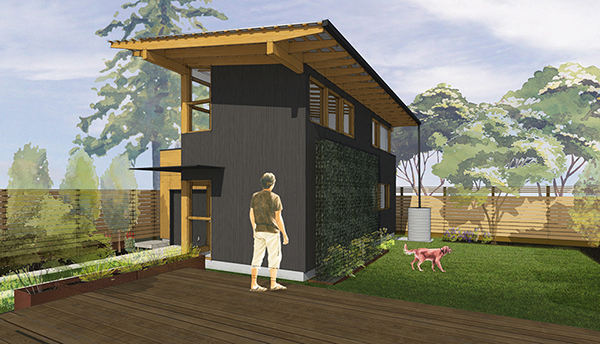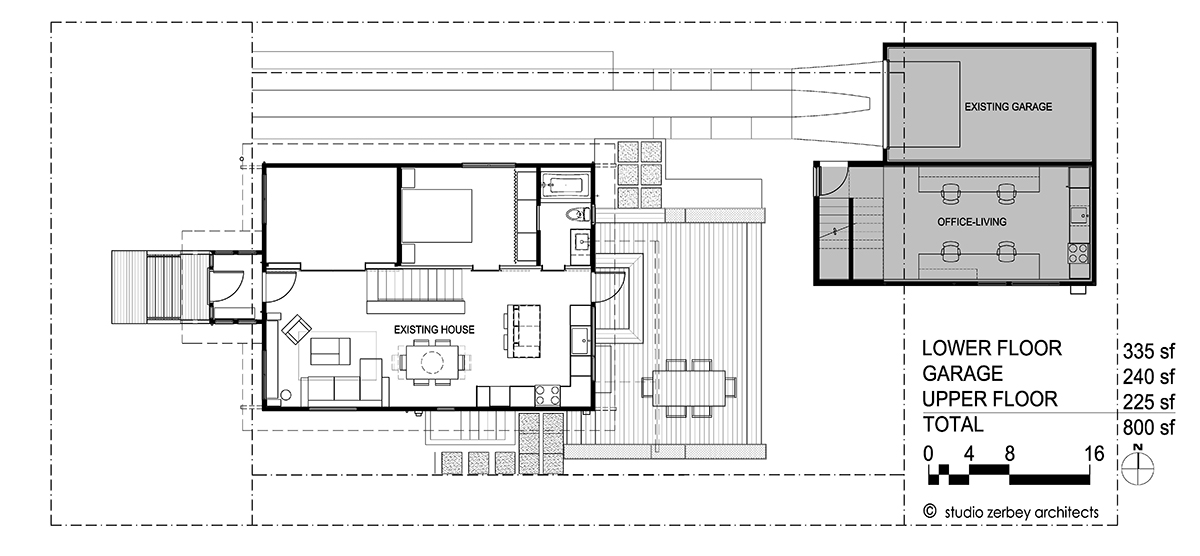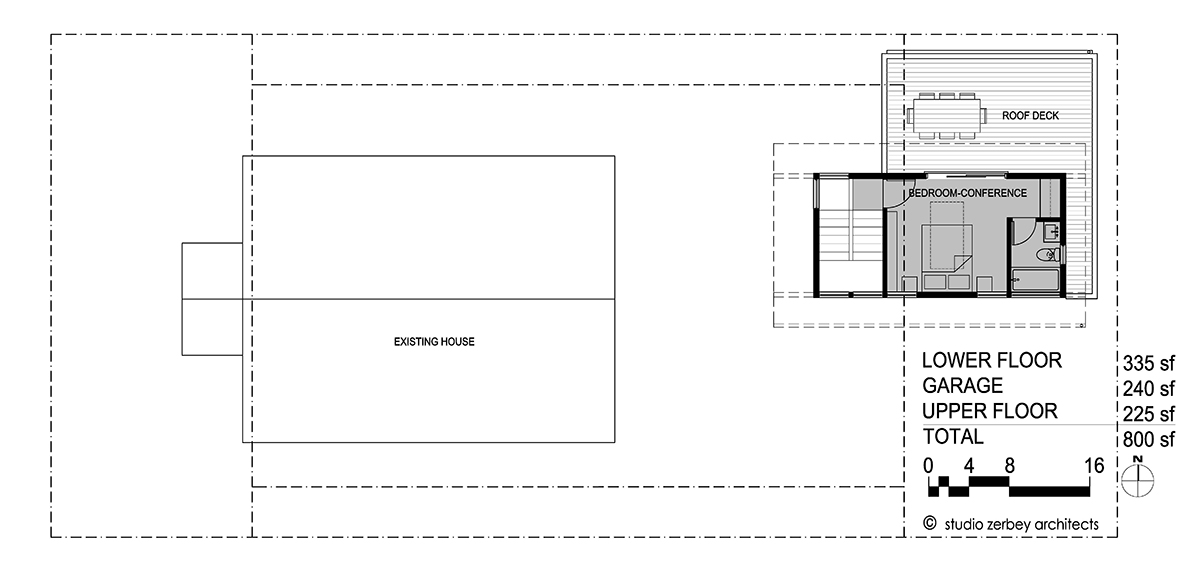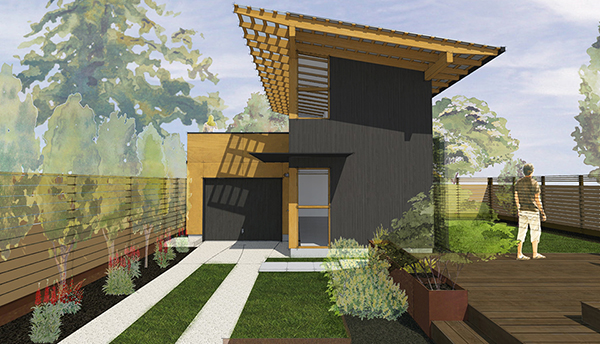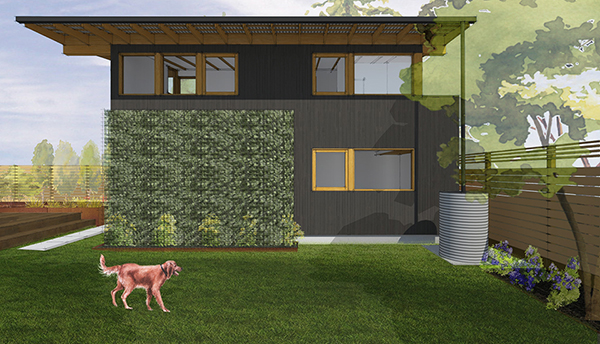Happy Sunday! Let’s get this week started off with a little garage talk, shall we?
Oh, don’t let that rendering above fool you – she’s still there – our little 1910/1965 hybrid of embarrassment.
Nearly a year and a half ago(!) we wrote this post about our plans to remodel while working with the existing structure, keeping it mostly as a shop space. Well, that obviously never happened and maybe it’s for the best.
Because we’ve been thinking – what if we did something like that first image instead?
Since the arrival of our second kiddo, we’ve given more thought to the future of our business and how we could continue to grow and work (effectively) from our little house. And although there are a lot of perks that come with working from home, it’s become pretty clear that we’re going to eventually need more space and separation. So, we considered leasing or buying a space and even looked at a few potential properties. But nothing felt quite right and ultimately we decided that because we have to do SOMETHING with the garage/carport we might as well make it our office. (If there was an easy fix to make it less hideous, we’d probably consider that but…well, there’s really not.)
But not just an office. That’s not how we roll y’know – it would be an office and a shop space and an apartment. Shazam! Ok, technically speaking – it would be a Detached Accessory Dwelling Structure. In other words, a DADU! Attached dwelling units (think basement apartment) have been allowed in Seattle for a long time but the detached versions are still fairly new. There are specific Land Use guidelines that govern the development of these structures but Kyle has read the code inside and out and came up with a new solution that we’re both pretty excited about.
Originally we were hesitant about investing in a more significant remodel (i.e. second story) when we weren’t sure we’d actually rent it out. (Still seems kinda weird for someone to live in our backyard, right?) But when we started thinking more about the primary use being our office space it made more sense.
So this is how it would play out – most of the time the structure would be used as our office (with the capacity to add 2-3 employees). The existing garage would stay as shop/storage space and the carport would become our studio space (and include a modest kitchen). The upstairs would have a bathroom, conference area and materials library. If we had family in town or weekend guests, they could stay upstairs (the conference table slides out to the deck and a murphy bed folds down in its place) and be up and out before the work day started. Later, if we were to sell the house then the structure could be used as a stand alone rental unit, office or guest cottage. (The lower level would become kitchen/dining/living and the upper level bedroom and bath.)
The goal is to maximize the efficiency not just for our current needs but for future use as well.
Click on floor plans to enlarge.
From a design standpoint, the biggest challenge was how to work with the existing structure to create a two-story solution that was not overbearing in scale or costs. The current garage is non-conforming in that it is too close to the north and east property lines. We don’t have to change what’s already there, but a second story would have to comply with current setback requirements (minimum of 5′). DADUs are also limited to 800 SF, so doing a full second story wasn’t really an option anyway. Other challenges included where to put the stair, providing privacy and minimizing the structural complexity with only a partial second story.
The solution we came up with limits the addition to over the carport only, allowing us to work with the existing bearing walls and footings. (Kyle already completed some exploratory digging and got the ok from our structural engineer that the existing footing could accommodate the additional load.) A new stair would be added to the front of the carport, where we’re not limited to setback requirements. A deck on the north side (over the existing garage) would provide some private outdoor space for the apartment. The existing concrete slab, footings, wall framing (including that sweet garage door!) and some roof framing would remain, saving on costs and preserving the original structure’s grandfathered status. We also gave careful thought to window placement, realizing that we didn’t want the windows in our kitchen to look directly into the building and vice versa. This solution places the windows mostly on the south side and northwest corner, letting in plenty of natural light but limiting direct views.
These moves help break the overall massing into two forms, with proportions that now feel appropriate for our backyard. The material palette would consist of vertical stained cedar siding, economical exterior grade plywood, wood windows and a corrugated metal roof. Aesthetically, we don’t think that this structure needs to match the main house, but that they do compliment each other. The proposed palette achieves this while still giving us the freedom to explore new ideas and materials. I think it goes without saying these days, but we’d also like to implement as many sustainable strategies as possible. Obviously the big ones include creating more density on our lot and reusing an existing structure. Other features would include a south-facing vegetated trellis (to grow edibles), a cistern to collect roof run-off (and then use for irrigation) and pre-wiring for solar on the south-facing roof.
Now that we have a design that we’re happy with, we’ve been looking into financing options and talking to different contractors. Ideally, we’d hire out the job this time around but we might also consider acting as our own General Contractor or adding some sweat equity if we need to reduce the overall budget. That said, we’re also trying to approach this as a case study project – achieving a creative design solution on a reasonable budget. The DADU was legalized largely as a means to deal with increased urban density (everyone wants to move to Seattle!) and we’re excited to explore what this could mean not only for our family but for all the other potential DADU projects out there.
Finally, what would this project mean for our house? Well, moving our Studio Zerbey headquarters to this new structure would free up space and (hopefully) give us back some breathing room. (Our baby sleeps in the dining room, remember?) While the girls are still little, we’ll likely keep the attic loft as a satellite office space (I’m sure they’ll totally claim it later). My office (aka our basement guest bedroom) would probably be used as a shared sleeping space for Avery and Lillian, keeping the current nursery as a play area. (With the DADU, we’d no longer need a guest room.)
We’re hoping to move forward with construction this year. Our projected workload is such that we need to seriously consider hiring 1-2 employees in 2015 and we just don’t have space right now. It’s an exciting project for us, not just because it will be the last big thing to cross off our remodel to-do list (plus the basement bathroom and laundry room, ugh!) but it will also be a big step in the growth of our business. Unlike our home, where we had less carte blanche and were working within tight budget and phasing constraints, this will also be an opportunity to do something that is a bit more reflective of our design sensibility.
So, onward!
